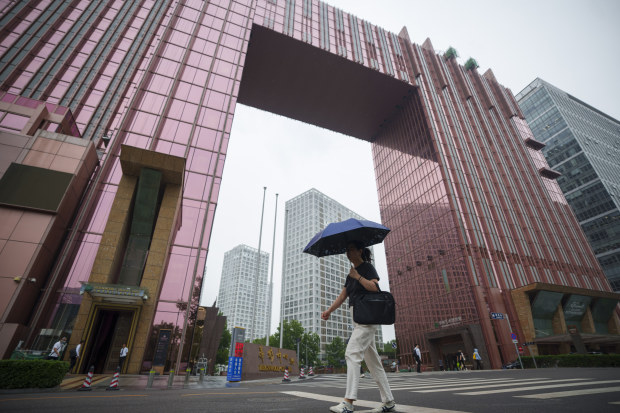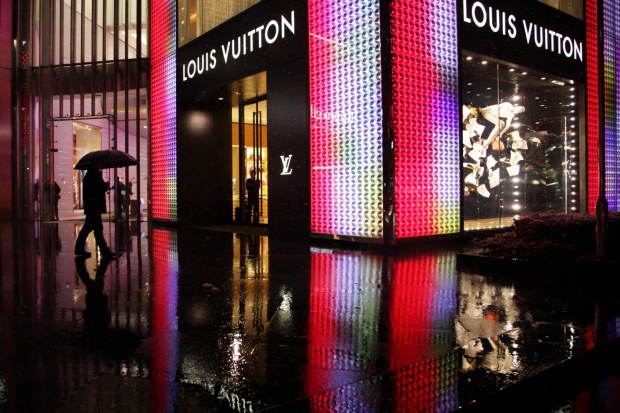There’s a frightening new bubble building in China
China’s property bubble has popped, its economy is spluttering and its sharemarket is all over the place. Now there’s a new problem to watch.
Listen to this article4 minYou can expect to hear a lot about China in the next few weeks. Having claimed 89 medals at the Tokyo Games, the huge Chinese team will be a force to be reckoned with in Paris.
But away from the track, pool and playing fields, there’s a much bigger story brewing in Beijing. And Australian investors – and governments – should be paying more attention.
China’s spluttering economy has created a credit bubble that has Chinese officials worried. AP
On Friday, China’s 10-year bond yield hit a record low of 2.17 per cent, just days after the People’s Bank of China announced a surprise interest rate cut.
Money is pouring into China’s bond market, sending prices surging and yields falling (prices and yields move in opposite directions) as investors seek alternatives to the nation’s broken property market and volatile equity market. Yields on longer-dated 20-year and 30-year bonds are also hovering around record lows.
In an economy spluttering as much as China’s, lower borrowing costs would generally be welcomed. But the moves are worrying Chinese regulators, who have issued a string of warnings in the past four months about what they concede is a bubble. The government has even done something unprecedented: borrowing bonds to sell them, in a bid to push down prices.
AdvertisementClearly, it’s not working.
The steady grind lower in bond yields is evidence that investors are betting more rate cuts will be needed to stimulate the economy. But that’s not helpful for the government, for three reasons.
First, it risks compounding the deflationary mindset that many fear is gripping China – consumers stop consuming because they believe prices will keep falling.
Second, the gap between bond yields in China and the US is putting pressure on the value of the yuan and causing capital to leave the economy at a rate not seen this decade.
Third, the rate cuts aren’t really working, because China appears to be caught in a liquidity trap – no matter how far rates fall, no matter how much liquidity is pumped into the economy, there is little demand from borrowers.
Consumers are spooked by the property crisis, which shows no sign of ending – house prices fell at the fattest rate in a decade last month – while weak business confidence is weighing heavily on corporate borrowing.
This has left China’s banks with a problem: where to park their excess cash. And despite government warnings, and some level of stress testing by the PBoC, they’re parking it in bonds.
And herein lies the big problem. Should the bond bubble burst, pushing bond prices lower and yields higher, those same banks could be caught with maturity mismatches that we saw cause big problems for Silicon Valley Bank last year.
As an editorial in the state-owned publication Securities Times said this month: “The bubble formed by the rush of funds into the bond market is accumulating interest rate risks.”
Shares in luxury goods makers including LVMH, Kering, Swatch and Burberry have been hit hard by falling Chinese demand. Bloomberg
Clearly, the PBoC and other regulators will try to do everything in their power to stop the bubble bursting. But policymakers are walking a tightrope, given they want to stimulate the economy and encourage more borrowing. This would prompt banks to liquidate their bond holdings to lend more, putting upward pressure on bond yields and downward pressure on prices.
It’s a tricky situation. But as local UBS strategist Richard Schellbach notes, what’s remarkable is that China is dealing with the fallout from three bubbles: one in the property market, one in investment markets, and one in credit markets.
Schellbach says that over the past 15 years, such a triple crisis has been presented as a sort of Armageddon scenario for Australia’s China-exposed market and economy.
There are signs of pressure on global markets. Commodities from oil and copper to iron ore have been falling, and shares in luxury goods makers including LVMH, Kering, Swatch and Burberry have been hit hard by falling Chinese demand.
But while there has been pressure on the shares of Rio Tinto (down about 15 per cent in the year to date), BHP (17 per cent) and Fortescue (30 per cent), and a broader rotation out of resources and into banks, the S&P/ASX 200 is holding a near 4 per cent year-to-date gain.
Are local investors being too sanguine on China? Barrenjoey strategist Damien Boey worries that on top of all these problems, Donald Trump’s policy platform is heavily anti-China. Three bubbles and the potential for tariffs designed to smash China’s economy is a seriously worrying combination.
- Forums
- ASX - By Stock
- XJO
- Indices 29/07
Indices 29/07, page-17
-
-
- There are more pages in this discussion • 64 more messages in this thread...
You’re viewing a single post only. To view the entire thread just sign in or Join Now (FREE)
Featured News
Add XJO (ASX) to my watchlist
 (20min delay) (20min delay)
|
|||||
|
Last
8,103.2 |
Change
-6.700(0.08%) |
Mkt cap ! n/a | |||
| Open | High | Low |
| 8,109.9 | 8,110.2 | 8,073.7 |
Featured News
| XJO (ASX) Chart |






